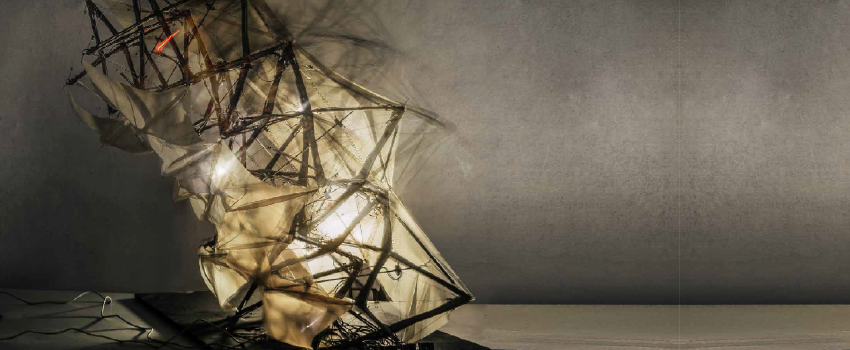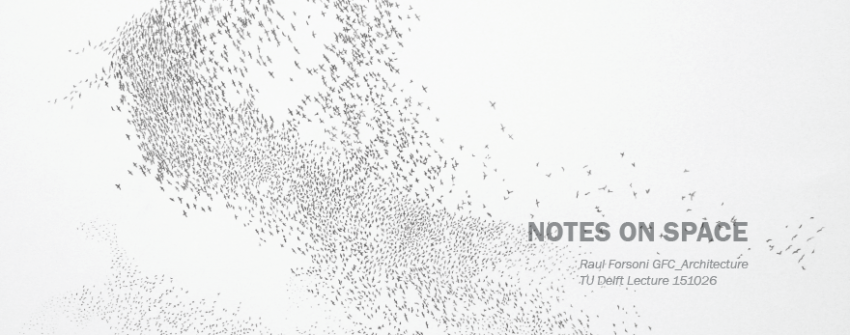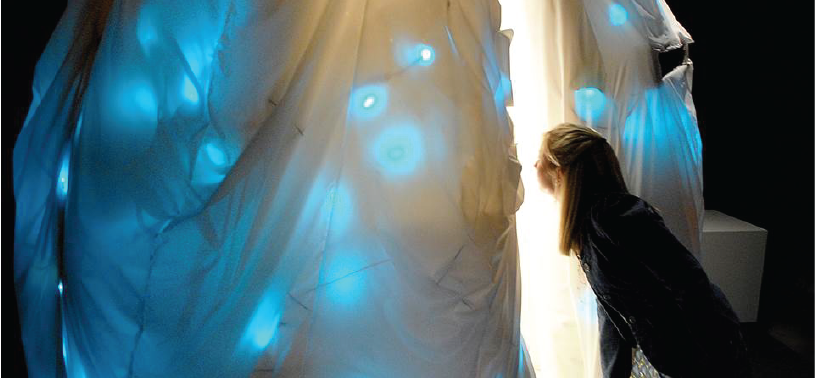Lectures
Contents
- 1 MSc1&3:Lectures
- 2 RAM | Real Additive Manufacturing | Conference 2015 |FRIDAY 23rd OCTOBER | 09:00 HRS
- 3 LECTURE 1.0 | INTERACTIVE ARCHITECTURE | MONDAY 9th NOVEMBER | 14:00 HRS | PROTOSPACE
- 4 LECTURE 2.0 | THEORY & PRACTICE | WEDNESDAY 25th NOVEMBER | 14:00 HRS | PROTOSPACE
- 5 LECTURE 3.0 | RESEARCH & PRACTICE | MONDAY 30th NOVEMBER | 10:00 HRS | PROTOSPACE
- 6 LECTURE 4.0 | BUILT ENVIRONMENT | WEDNESDAY 9th DECEMBER | 09:00 HRS | PROTOSPACE
- 7 REFERENCE
MSc1&3:Lectures
RAM | Real Additive Manufacturing | Conference 2015 |FRIDAY 23rd OCTOBER | 09:00 HRS
On Friday October 23 the first Real Additive Manufacturing conference will be hosted at TU Delft - Architecture. During this event insight will be generated on real potential of additive manufacturing for the built environment industry.
OUTLINE | Additive Manufacturing (AM) is referred to as a very promissing technique, but what are the important functions and characteristics of produced building components. Can additive manufactured elements already be implemented widely in the building industry, or should the performance be improved first?
This Think Tank will focus on the implementation of AM in the building industry, trying to answer questions regarding durability, (anisotropic) material behaviour and what kind of materials can be used. Can different materials be combined in an AM production process, or are ‘new’ materials with matching production techniques desired is a question that will arise, but there are more challanges. During the discussion we want to invite you to be creative and think about the application of AM, but regulation is also a topic. How does AM fit in the building industry’s standards and legislation?
Let’s give the building industry a boost with Real Additive Manufacturing!
Date: Friday October 23, 09.00 - 18.00
Location: Delft University of Technology Faculty of Architecture, Berlage Rooms (ground floor) Julianalaan 134 Delft
LECTURE 1.0 | INTERACTIVE ARCHITECTURE | MONDAY 9th NOVEMBER | 14:00 HRS | PROTOSPACE
Performing vs Forming Programming Matter for Adaptive Buildings | Areti Markopoulou
The novel aspect of the Digital Matter research agenda presented is the process of implementation of smart materials in architectural systems and the exploration of how digital design- fabrication and physical computing can contribute on the implementation of dynamic systems in the architectural scale.
The new challenges in architecture, the impacts of the Information Era Technologies and the advances on digital manufacturing techniques bring new or adapted concepts, where physical space seamlessly intertwines with digital content. Our buildings and cities will need new interfaces to communicate with the environment and embedded systems of performance that do not rely on existing urban infrastructures.
Material Intelligence in combination with Artificial and Computational Intelligence, sensors, actuators, as well as bio-mimetic and digital manufacturing innovations will play a critical role in this development providing revolutionary ideas on growth, adaptability, repair and energy savings in architecture.
Should we continue constructing rigid and fixed structures?
Or can buildings and cities begin to think?
Designing Engaging Interactions through Movement Experiments with Near Living Architecture | Dana Kufic
Can architectural environments provide an engaging and emphathetic interaction with occupants? In this talk, we describe our work designing movement based interaction strategies for the Hylozoic Series architectural environments. In the first part of the talk, we will describe affective movement based interaction. Human body movements are a significant source of non-verbal communication that are used to convey affective state. The ability to recognize affective expressions and generate appropriate responses with recognizable affective content is a key component for creating an engaging, entertaining, and empathic human-machine interaction. This talk will present our recent work on developing approaches to systematically identify movement features most salient to affective expressions and to exploit these features to design computational models for the automatic recognition and generation of affective movements. We describe a comprehensive framework to for understanding which features of movement convey affective expressions, the automatic recognition of affective expressions encoded in movements, and adapting pre-defined motion paths to overlay affective content.
In the second part of the talk, we will describe an approach for adapting the Intelligent Adaptive Curiosity learning algorithm previously introduced in the developmental robotic literature to distributed interactive sculptural systems. This Curiosity-Based Learning Algorithm (CBLA) allows the system to learn about its own mechanisms and its surrounding environment s through self-experimentation and interaction. A novel formulation using multiple agents as learning subsets of the system that communicate through shared input variables enables us to scale the learning algorithm to a much larger system with diverse types of sensors and actuators. Experiments on a prototype interactive sculpture installation demonstrate the exploratory patterns of CBLA and the collective learning behaviours through the integration of multiple learning agents.
LECTURE 2.0 | THEORY & PRACTICE | WEDNESDAY 25th NOVEMBER | 14:00 HRS | PROTOSPACE
Notes on Space | Raul Forsoni
Borders and Territories | Sang Lee
Sang Lee studied architecture at Illinois Institute of Technology (B.Arch. Hons.) and the University of Pennsylvania (M.Arch.) Subsequently, Sang worked with Mitchell Giurgola Architects, Frederic Schwartz Architects, Venturi Scott Brown Architects, William McDonough Architects, and Studio Daniel Libeskind. He received his doctorate in architecture from the TU Delft. Sang served as Lecturer of Architecture for the Chair of Paul Philipe Cret Professor and the coordinator of the US-EU exchange program at the School of Design, the University of Pennsylvania, 2000-2003, where he taught research thesis studios as well as core design studios. Sang’s design and research interests emphasize the relationship between architecture, media and performing arts, and the means to assemble, reframe and project spatial and narrative qualities as an organization of embodied experience. In 2007 he edited and published The Domestic and the Foreign in Architecture (010 Publishers) and in 2011, Aesthetics of Sustainable Architecture (010 Publishers). Currently Sang is working on two book projects: Architecture in the Age of Apparatus-Centric Architecture and Meta-architecture: Algorithm, Semiosphere and Environment. In additon he has contributed several articles to books and conferences. He has also lectured and served as a design critic at Dessau Institute of Architecture FH Anhalt, Bergen School of Architecture, Oslo School of Architecture, Aarhus School of Architecture, TU Eindhoven, Bauhaus University Weimar, TU Berlin, Columbia University, Pratt Institute, Temple University, UCLA and Sci-ARC. Sang has won several research and education grants from Creative Funds NL, Netherlands Architecture Fund, Federal Cultural Foundation of Germany and European Commission's Directorate General for Culture and Education.
LECTURE 3.0 | RESEARCH & PRACTICE | MONDAY 30th NOVEMBER | 10:00 HRS | PROTOSPACE
Interactive Wall | Hoessein Alkisaei
Digital Craftsmanship: thinking - scripting/modeling - building | Anurag Bhattacharya | ZJA (Zwarts & Jansma Architects)
ABSTRACT The explosion of digital technologies highlighted the complexity and nonlinearity of the process that we as architects and computational designers experience daily in practice, while massively expanding the ability to visualize and represent forms and to analyse their functional, performative and structural behavior. Parametric and computational approaches have obviously changed both architecture and engineering, and so also the potential for
interaction. That is the subject of the research and discourse presented in the lecture. There is a newfound appreciation of the breadth and depth of ways in which architecture and engineering can interact. The projects and methodology shown will provide a shared context
to provoke thinking about design, develop new viewpoints, and approaches across disciplinary boundaries in practice, and construction, unlocking the potential to discover new underpinned meanings.
ZJA draws on state-of-the-art technical expertise thanks to amongst others its independent R&D group. In addition, our office collaborates with inspiring international network of interdisciplinary expertise, ranging from structural engineers, urban designers, acoustic engineers, and sustainability experts to universities, research groups and software developers. We got fascinated into computation design approach as an experiment at a time when markets were expanding and architecture faced the challenge of responding to new popular imaginations and accountability. The discourse aims to get acquainted with practical side of the computation design. There will be an attempt to reveal the dichotomy between conventional and advanced models of practice using a series of carefully selected office projects. Many of the projects discussed would be almost impossible to deliver without recent developments in parametric design technology and computation processes, and their relative accessibility gives insight into how projects unfolded. This interplay of technology with core ideas of thinking, explanation and reasoning, exploring, questioning is the next modus operandi.
ABOUT ZJA is an internationally oriented office founded in 1990 and specialises in infrastructure, public transport, sport and leisure. Wherever we go, we take cues at how people move in a park, cyclists, queues, building physics, materials, spectators, at history, at a dune, flowing rivers... everything we see finds its way back into our work, often translating complex assignments into unexpected solutions. We do this in a distinct manner, based on our many years of experience with large-scale building projects. We value our reputation as designers of stadiums, bridges, stations and motorways.
Recommended Readings • FROM CONTROL TO DESIGN by Tomoko Sakamoto • Digital Fabrication in Architecture by Nick Dunn • Computational Design Thinking: Computation Design Thinking by Achim Menges • Material Strategies in Digital Fabrication by Christopher Beorkrem • Computation Works: The Building of Algorithmic Thought by Xavier De Kestelier • Modular Structures in Design and Architecture by Asterios Agkathidis
LECTURE 4.0 | BUILT ENVIRONMENT | WEDNESDAY 9th DECEMBER | 09:00 HRS | PROTOSPACE
Smart material systems for adaptive architecture | Patrick Teuffel
Various design aspects influence the building performance such as architectural criteria, multiple environmental impacts and user behavior. Specific examples are sun, wind, temperatures, function, occupancy, socio-cultural aspects and other contextual aspects and needs. Even though these aspects are acknowledged to be variable, conventional buildings are conceived to provide one design solution, represented in a static configuration. Due to the changes in needs and context, a static building cannot guarantee the same level of performances over time. This will lead to a discrepancy between the building and the environment. On a long term, this discrepancy is currently approached through refurbishment and transformations; on the short term this discrepancy is currently tackled through minor refurbishment and installations. However, conventional buildings are not designed for adaptation to contextual aspects and needs. Current adaptation on both short and long term will lead to a considerable amount of effort and costs. The research focuses on the instant adaptation of the building, in order to facilitate an effortless adaptation to context and needs.
Parametric design, Twisted logic or Common Sense Application of parametric design strategies and (structural) optimization in contemporary design cases | Chris van der Ploeg | ABT Structural Engineer
Complexity of architectural designs is increasing as a result of advances in digital design tools. The wish for an integrated design process adds even more layers of complexity. This complex design task needs, in additional to traditional common sense engineering, logic-based (or parametric) geometrical design and analysis approaches. Based on the integrated parametric design approach, the incorporation of manufacturability aspects in the overall design process will furthermore lead to an enhanced control of quality and economical risk. The use of these strategies and the implications on the design process nowadays will be discussed along several design cases from practice.
REFERENCE
Monday 14th and Wednesday 16th: Final Presentation and Report
Reference links: TEDx talk – http://tedxtalks.ted.com/video/Robotic-Building-Henriette-Bier Open access papers from the Research Gate - http://www.researchgate.net/profile/Henriette_Bier/publications







